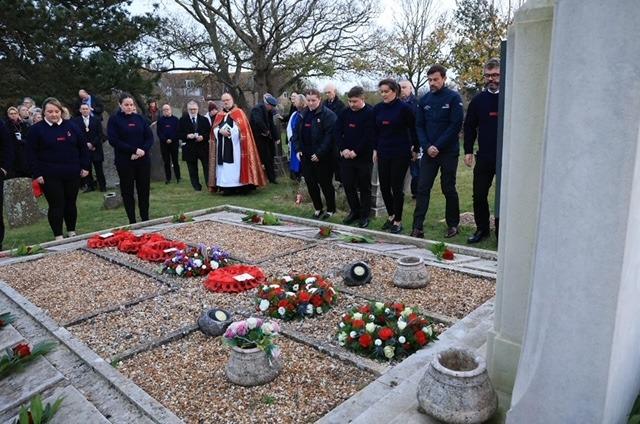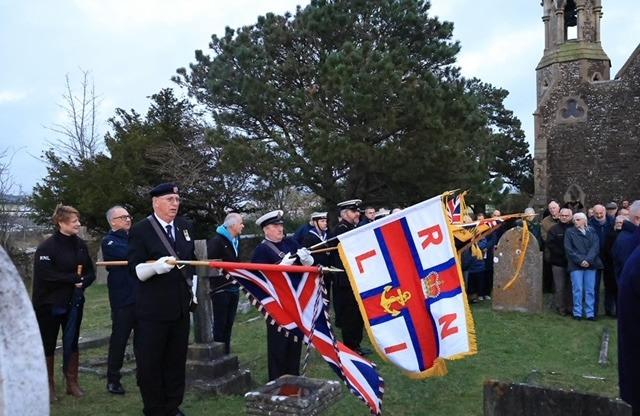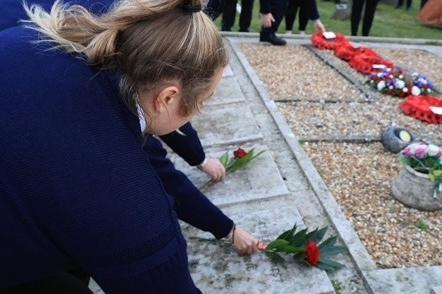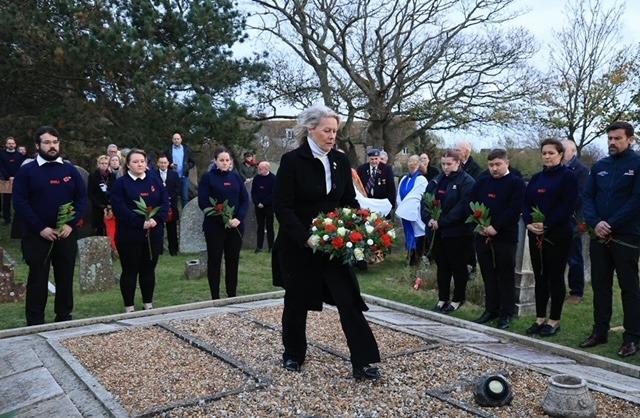A moving service at Rye Harbour Church saw 17 candles being lit for each of the crew members and the singing of The Mary Stanford Shanty by the Rye Harbour Herrings.
Members of Rye Harbour RNLI were joined by representatives from the Hastings and Dungeness stations.
Wreaths were laid at the lifeboat memorial in the churchyard and roses and laurel leaves placed on the graves.
The Mary Stanford Lifeboat capsized with the loss of all lives while answering a distress call. It set sail in the face of a fierce storm, with winds in excess of 80mph, on November 15 1928 at 6.45am.
She was going to the aid of the crew of the ‘Alice of Riga’, a Latvian vessel which had been involved in a collision with a large German ship ‘Smyrna’ eight miles south west of Dungeness. She had suffered the loss of her rudder and a hole had been torn in her side.
At 6.50am, Rye Coastguard received a message saying that the crew of the ‘Alice of Riga’ had been rescued by the ‘Smyrna’, and frantic efforts were made by the signalman to recall the lifeboat, but to no avail. Battling the storm, the crew failed to see or her the recall rockets that were fired.
At approximately 9am, the lifeboat was spotted three miles WSW from Dungeness and all appeared to be well. At approximately 10.30am, a young boy collecting driftwood at Camber looked out to sea and in a bright shaft of sunlight saw the lifeboat capsize. He ran home to tell his parents who reported it to Jury’s Gap Coastguard at Camber.
The impact of the disaster on the close knit community of Rye Harbour community devastating and deeply affected all who lived there. Those who perished included fathers, sons and brother. The disaster was front page news over the days that followed.
The funeral was attended by hundreds including the Latvian Minister. The Lifeboat House still stands at Rye Harbour, but was never used again. It remains the biggest loss of life from a single lifeboat in the history of the RNLI.
The 17 men who lost their lives were: Herbert Head (47), coxswain, and two sons James Alfred (19) and John Stanley (17); Joseph Stonham (43), 2nd Coxswain; Henry Cutting (39), Bowman and his two brothers Roberts Redvers (28) and Albert Ernest (26); Charles Frederick David (28), Robert Henry (23) and Lewis Alexander (21) Pope, three brothers; William Thomas Albert (27) and Leslie George (24) Clark, brothers; Arthur George (25) and Maurice James (23) Downey, cousins; Albert Ernest Smith (44), Walter Igglesden (37) and Charles Southerden (22).
The body of the youngest crewman John Head, aged 17, was never found.
Pictures by KT Bruce.

1. Mary Stanford Lifeboat Memorial Service
Mary Stanford Lifeboat Memorial Service Photo: KT Bruce

2. Mary Stanford Lifeboat Memorial Service
Mary Stanford Lifeboat Memorial Service Photo: KT Bruce

3. Mary Stanford Lifeboat Memorial Service
Mary Stanford Lifeboat Memorial Service Photo: KT Bruce

4. Mary Stanford Lifeboat Memorial Service
Mary Stanford Lifeboat Memorial Service Photo: KT Bruce